-
 9 min. read
9 min. read
-
 Jessica Bonacci
Jessica Bonacci Content Writer
Content Writer
- Jessica is a Google Analytics certified Digital Video Analyst at WebFX. She has created over 100 videos for the WebFX YouTube channel (youtube.com/webfx) in the last two years. Jessica specializes in video marketing and also loves content marketing, SEO, social media marketing, and many other aspects of digital marketing. When she’s not creating videos, Jessica enjoys listening to music, reading, writing, and watching movies.
Transcript: There are a lot of different reasons your SEO efforts might not be working as well as they should. Most of them likely come down to some common SEO mistakes. Don’t panic. Even people doing SEO for years can make mistakes. That’s why I’m going to tell you about some of the top SEO mistakes and how you can fix them. Keep watching to learn more. Before I continue, I would encourage you to enter your website into our free SEO checker. 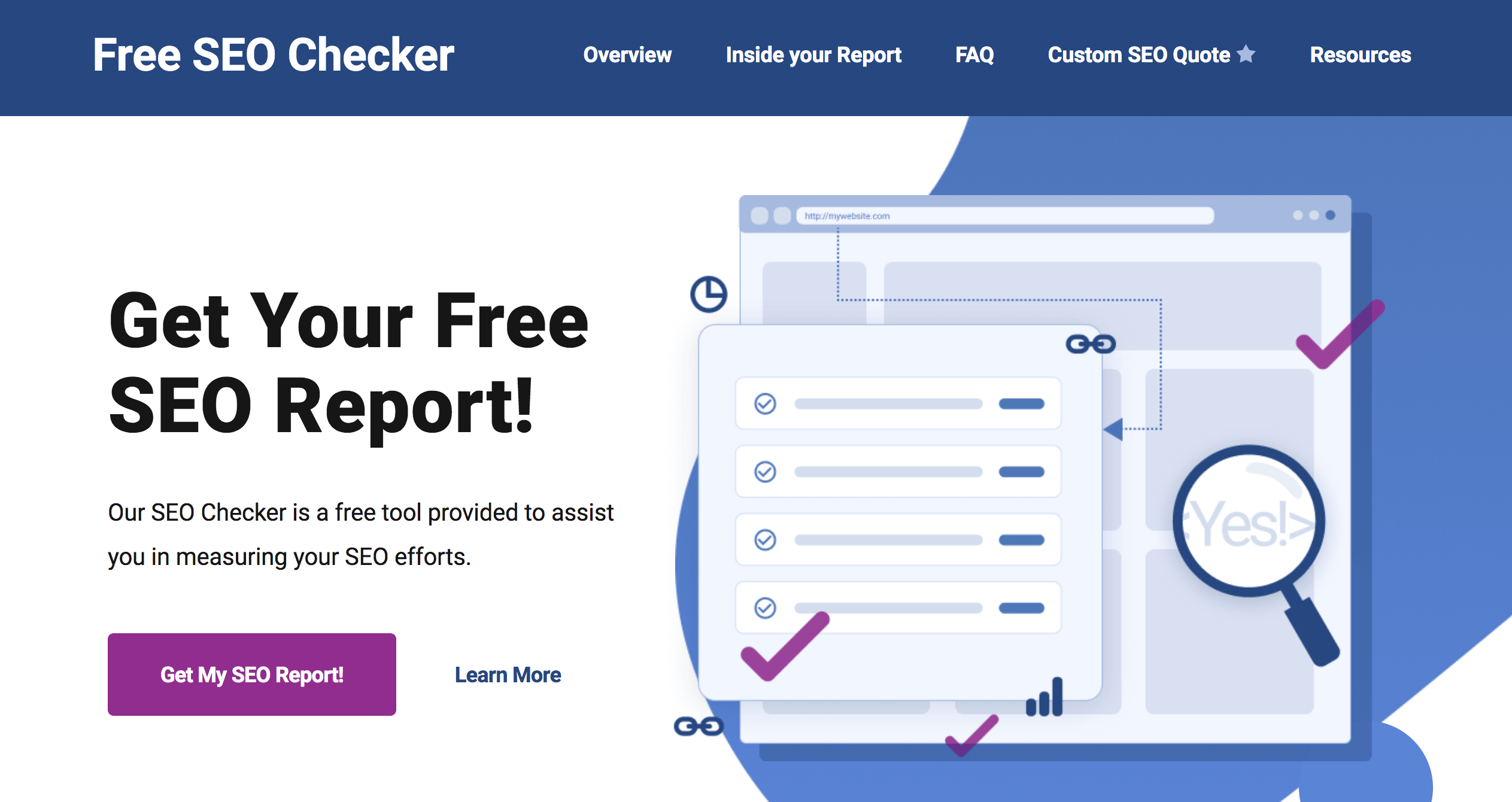 Our tool will go through your website and automatically find any places on your site with some SEO issues you can avoid. I’ll use the SEO checker as a basis for some of the top SEO mistakes in the list. So let’s go over 9 common SEO mistakes and how you can avoid them.
Our tool will go through your website and automatically find any places on your site with some SEO issues you can avoid. I’ll use the SEO checker as a basis for some of the top SEO mistakes in the list. So let’s go over 9 common SEO mistakes and how you can avoid them.
Looking for an all-in-one SEO audit tool? You’ve found it.
SEO Checker provides data on key metrics to give you:
- Complete SEO score
- Content Grade
- Site Speed Analysis
- and more.

1. You’re not creating custom title tags and meta descriptions
Title tags and meta descriptions help search engines and people understand what each page on your website is about. If you’re not clear when writing them, they won’t help your SEO, and people won’t click. You should always write title tags and meta descriptions with your core keyword in mind. Say you’re a jewelry designer and you have a page on your website targeting the keyword “gold necklaces,” and a separate page targeting “silver necklaces.” Gold and silver jewelry are completely different. You definitely want each page to show up in the search results for their respective metals, so you should include the right keywords in the title tags and meta descriptions to differentiate them. If every page on your website had a title tag that said, “designer jewelry,” there would be no context in the search results for people looking for a specific product.
2. You’re not using keywords in your content and headings
This SEO mistake has an easy fix. Just like you should use keywords in your title tags and meta descriptions, you should also use them throughout your pages. Keywords, again, help search engines understand the context of your page, contribute to where it should rank, and help determine when it shows up in front of searchers. Before you start creating content, use a keyword research tool to understand what people are searching so you can write something that answers their query. 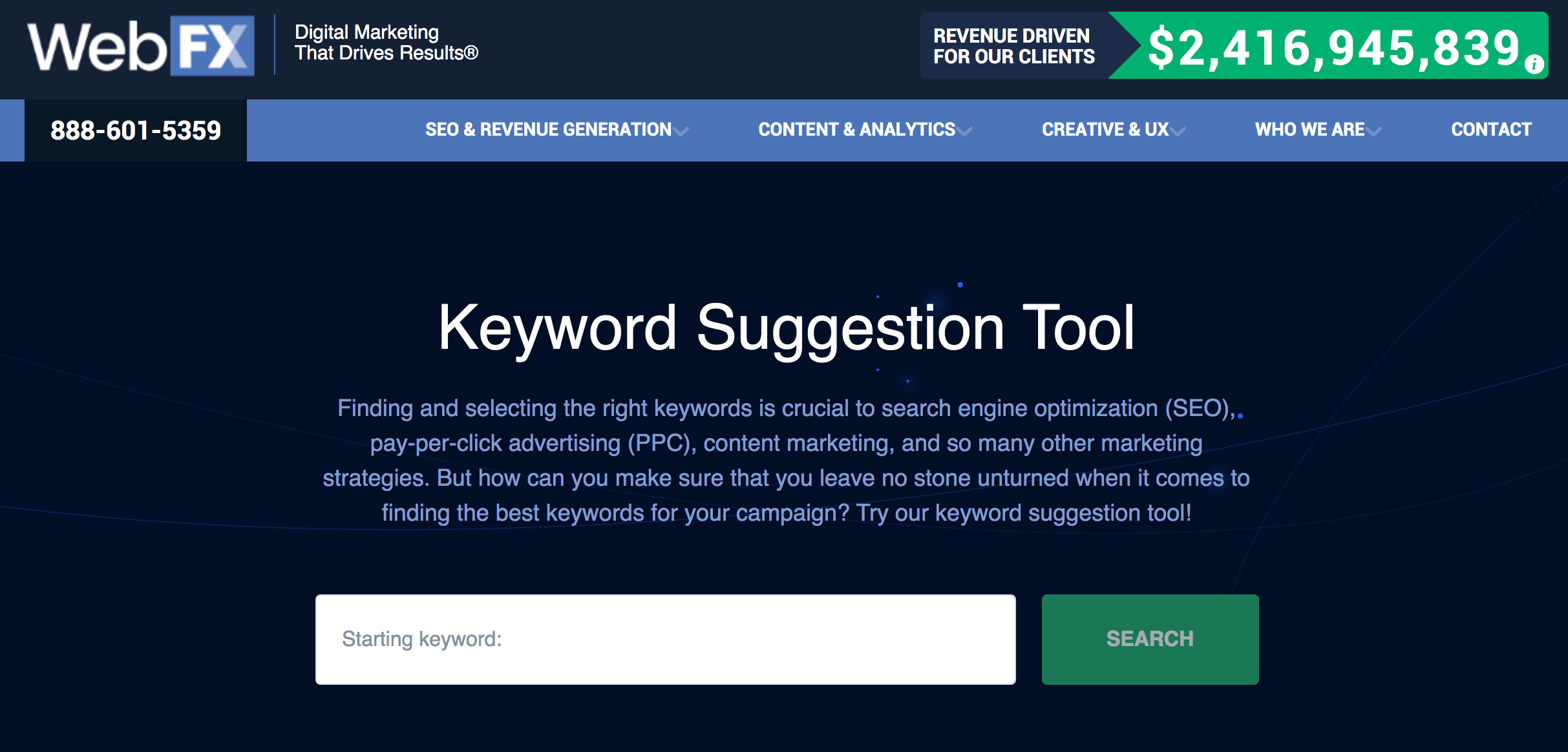 You’ll want to choose a core keyword, then a few related keywords to help give context to your content. Let’s pretend you’re that jewelry designer again, and you want to write about how to clean your jewelry. If you plug, “how to clean your jewelry,” into a keyword tool, you’ll see that it’s not crazy competitive and there’s a decent search volume. It’s a good target. You should then go further and search for your target keyword to compare results. The top result has a video, so it’s probably a good idea to format your content in a similar way. But do it better. Oh, and don’t stuff your keywords everywhere in your content.
You’ll want to choose a core keyword, then a few related keywords to help give context to your content. Let’s pretend you’re that jewelry designer again, and you want to write about how to clean your jewelry. If you plug, “how to clean your jewelry,” into a keyword tool, you’ll see that it’s not crazy competitive and there’s a decent search volume. It’s a good target. You should then go further and search for your target keyword to compare results. The top result has a video, so it’s probably a good idea to format your content in a similar way. But do it better. Oh, and don’t stuff your keywords everywhere in your content.
Use them where they fit naturally. Long story short, don’t just pick keywords and throw them wherever in your content. Do the research and use them strategically.
3. You’re not focused on earning links to your website
Links are a huge part of SEO and can really make a difference in your search engine rankings. When another site includes a link to your website in its content, that site can share some of its value with you. These links are known as backlinks, and the value passed on to your site is known as link equity. Using the jewelry designer example again, if you have a page on your website about how to clean your rings, and a big jewelry store links to your page, your site will get a boost from that link. Backlinks tell Google that people trust your website and that it should be higher up in the results. Not every site passes on the same amount of link equity, though. Using a tool like Ahrefs backlink checker, you can see the value of different websites. 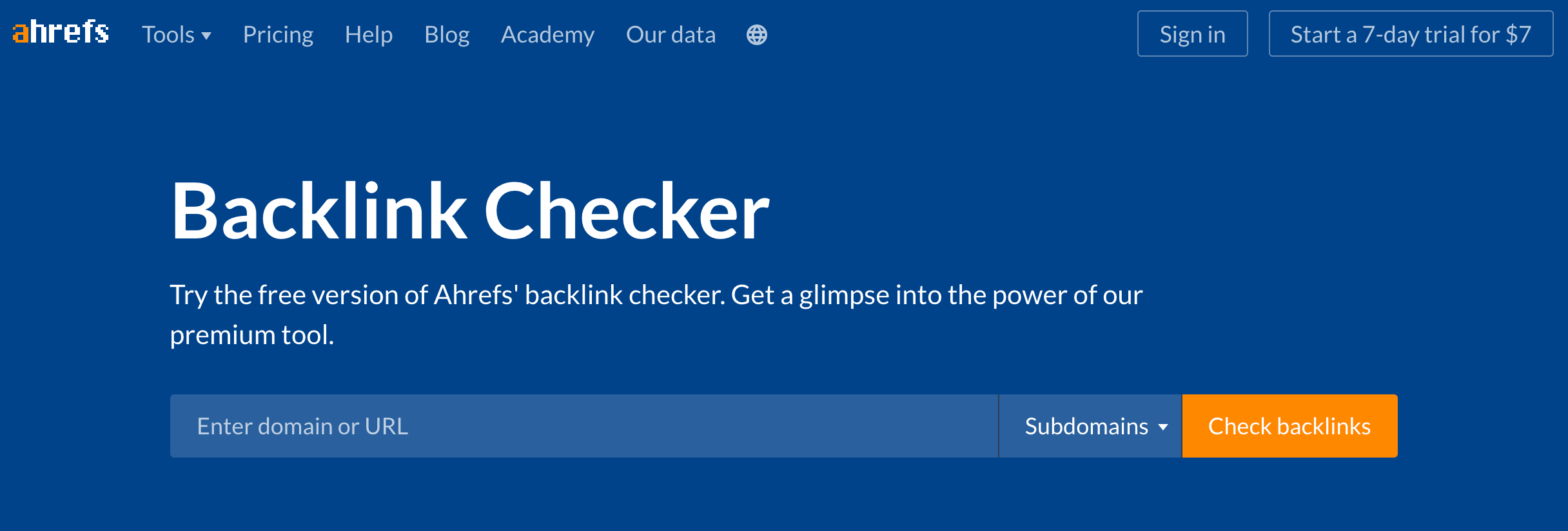 Getting people to link to your website isn’t easy. Sometimes, people might find your content through their own research and link to it. But that’s not always the case. You might need to research linking opportunities on blogs and websites relevant to your business. Once you’ve found potential linking opportunities, you need to reach out and share the value of your content.
Getting people to link to your website isn’t easy. Sometimes, people might find your content through their own research and link to it. But that’s not always the case. You might need to research linking opportunities on blogs and websites relevant to your business. Once you’ve found potential linking opportunities, you need to reach out and share the value of your content.
4. You’re not using the correct redirects
When you want to permanently redirect someone from an old or deleted page on your site to a new page, you should always use a 301 redirect. These redirects take the user to the new page so they don’t end up with an error. They also pass on link equity from the old page to the new page. Link equity, again, is the value a website passes on to another site when they include a link in their content. If you use a temporary 302 redirect instead of a 301 redirect, you lose out on that coveted link equity, so make sure you know which redirect you’re using.
5. You aren’t telling search engines which pages you want them to crawl
Internal linking is a good strategy for getting search engines to crawl and index all of the pages on your site. When crawlers reach one page that links to other pages, they’ll follow links to the other pages, and then other pages, and so on. But, a common SEO mistake is not having an XML sitemap that includes links to all of the pages you want in the search results. I want to emphasize that you should only include pages in your XML sitemap if you want them in the search results. Pages you don’t want in the search results go in a robots.txt file, which I’ll talk about next. 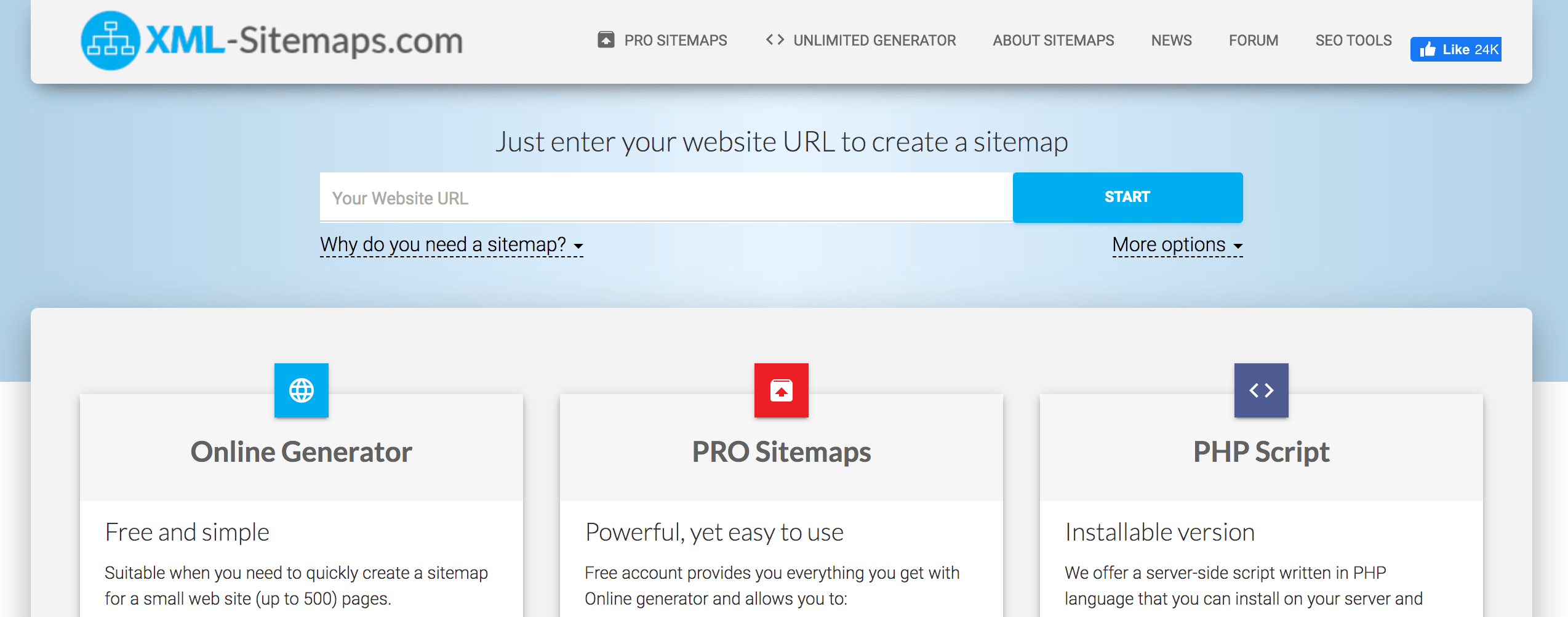 To create an XML sitemap, you can use a sitemap generator, or even a plugin with certain content management systems. Learn how to submit your sitemap to Google on the WebFX blog.
To create an XML sitemap, you can use a sitemap generator, or even a plugin with certain content management systems. Learn how to submit your sitemap to Google on the WebFX blog.
6. You’re accidentally blocking search engines from crawling your content
A robots.txt file is a useful tool for blocking certain pages on your website from crawlers. 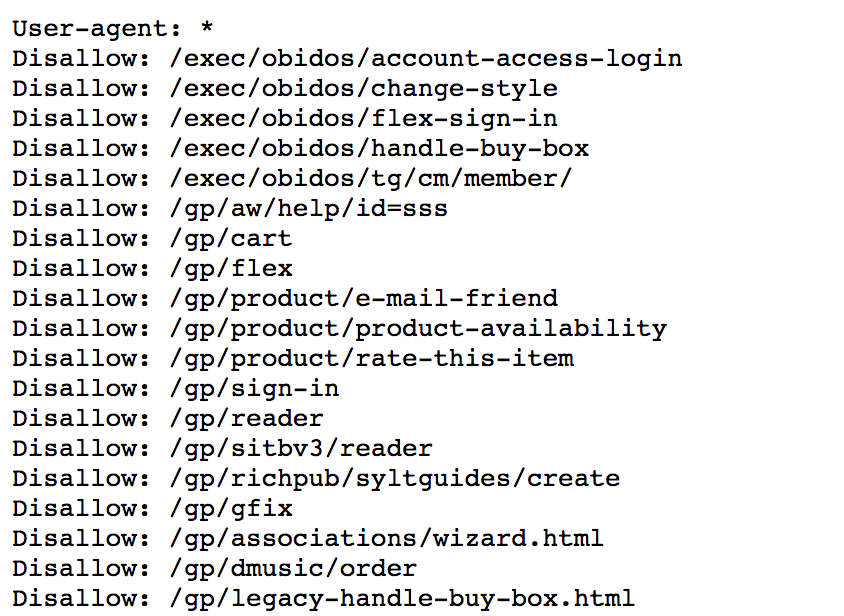 But, it’s also easy to accidentally block crawlers from pages you want them to crawl. To fix this SEO mistake, just look at your robots.txt file (aka type in your website’s URL and add /robots.txt to the end). The user-agent is the crawler you want to block. Next to disallow are the subfolders you want to block crawlers from. The asterisk means you want to block all user-agents. So if you have your user-agent set to the asterisk, and then you use disallow with a forward slash, you’re blocking all crawlers from your whole website. If that’s the case, you should probably fix this (unless you don’t want your site in search engines).
But, it’s also easy to accidentally block crawlers from pages you want them to crawl. To fix this SEO mistake, just look at your robots.txt file (aka type in your website’s URL and add /robots.txt to the end). The user-agent is the crawler you want to block. Next to disallow are the subfolders you want to block crawlers from. The asterisk means you want to block all user-agents. So if you have your user-agent set to the asterisk, and then you use disallow with a forward slash, you’re blocking all crawlers from your whole website. If that’s the case, you should probably fix this (unless you don’t want your site in search engines).
7. You’re not optimizing with a mobile-first mindset
A top SEO mistake is not keeping mobile users in mind when adding or updating pages. The easiest way to have a site that works on mobile and desktop devices is to have a responsive website. This means your site adapts to a variety of screen sizes. When you’re going through your content, make sure all of the multimedia elements are responsive, including videos and photos. You can also look into utilizing AMP, or Accelerated Mobile Pages, on your site for an ultra-boost to your speed.
8. Your site isn’t secure
Believe it or not, site security is a ranking factor. I mean, who would want to give their personal information to a website that has a “not secure” warning? Not me. If your website’s URL begins with HTTP, it’s not secure. Hackers can potentially steal any personal information you collect, like emails and credit card numbers. If your website URL begins with HTTPS, congrats!
You have an extra layer of security that encrypts personal data entered into your site. To secure your site, you’ll need to install an SSL certificate, which you can learn about on our website.
9. You’re not giving SEO time to work
Last but not least…SEO takes time. I repeat: SEO takes time. It’s a big mistake to give up on SEO after a few days or weeks. It can take anywhere from a few weeks to six months to start seeing changes after you’ve updated your site. With a PPC campaign, you can start seeing results as soon as you turn it on, but SEO is different.
It’s a long-term strategy. If you make major changes but don’t see any improvements, don’t lose hope. Just be patient.
Now that you know some of the top SEO mistakes people make, you can work to avoid them.
If you want to learn more about how to check your SEO, watch our video on how to check your SEO! Then, head over to our blog and subscribe to our YouTube channel for the latest in digital marketing.
-
 Jessica is a Google Analytics certified Digital Video Analyst at WebFX. She has created over 100 videos for the WebFX YouTube channel (youtube.com/webfx) in the last two years. Jessica specializes in video marketing and also loves content marketing, SEO, social media marketing, and many other aspects of digital marketing. When she’s not creating videos, Jessica enjoys listening to music, reading, writing, and watching movies.
Jessica is a Google Analytics certified Digital Video Analyst at WebFX. She has created over 100 videos for the WebFX YouTube channel (youtube.com/webfx) in the last two years. Jessica specializes in video marketing and also loves content marketing, SEO, social media marketing, and many other aspects of digital marketing. When she’s not creating videos, Jessica enjoys listening to music, reading, writing, and watching movies. -

WebFX is a full-service marketing agency with 1,100+ client reviews and a 4.9-star rating on Clutch! Find out how our expert team and revenue-accelerating tech can drive results for you! Learn more
Try our free SEO Checker
Boost your site’s search performance with our free SEO Checker. Analyze your website for optimization tips on titles, headers, content, speed, and more. Get a free report now to enhance rankings on Google, Bing, Yahoo, and beyond!
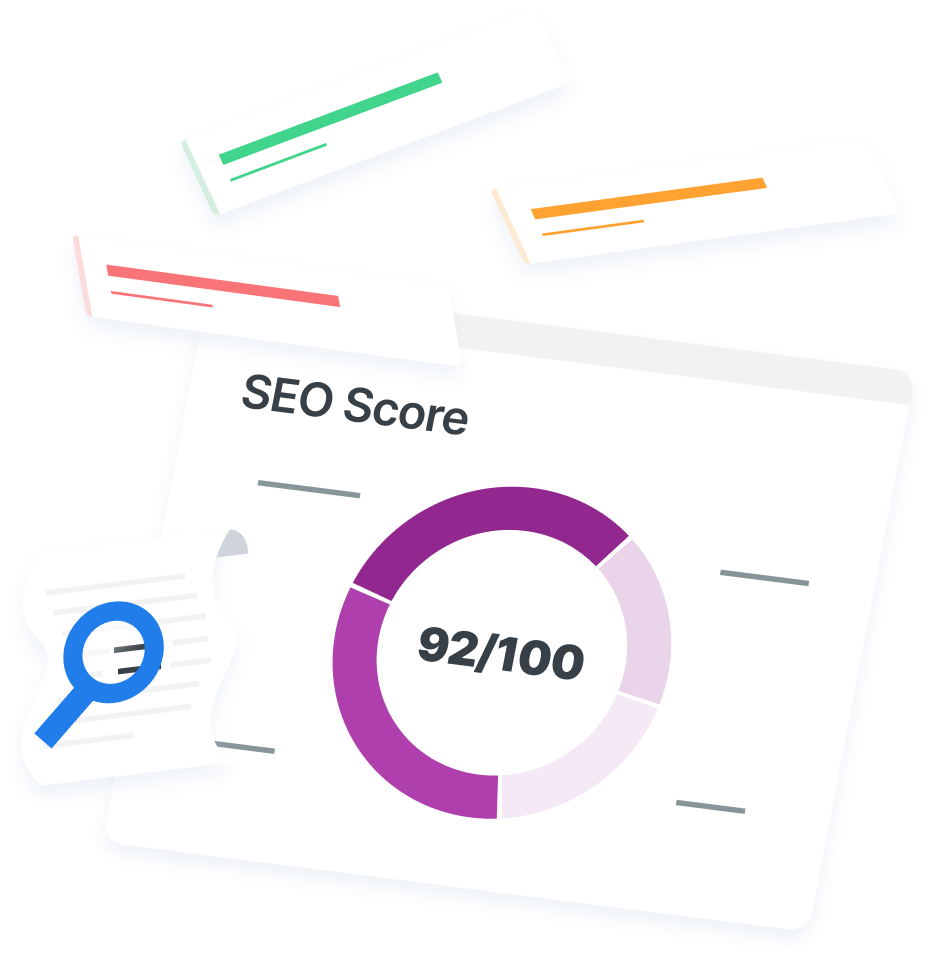
Table of Contents
- 1. You’re Not Creating Custom Title Tags and Meta Descriptions
- 2. You’re Not Using Keywords in Your Content and Headings
- 3. You’re Not Focused on Earning Links to Your Website
- 4. You’re Not Using the Correct Redirects
- 5. You Aren’t Telling Search Engines Which Pages You Want Them to Crawl
- 6. You’re Accidentally Blocking Search Engines from Crawling Your Content
- 7. You’re Not Optimizing with a Mobile-first Mindset
- 8. Your Site Isn’t Secure
- 9. You’re Not Giving SEO Time to Work

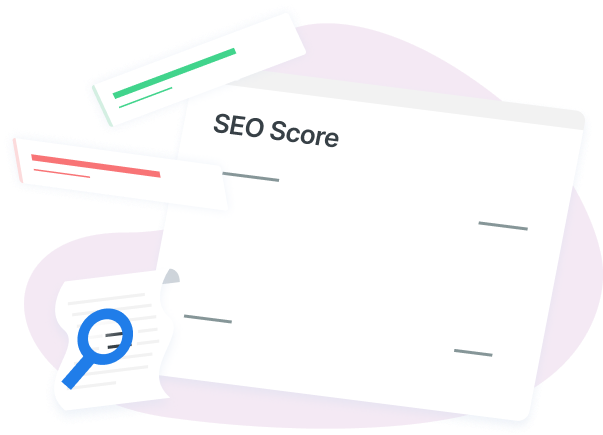
How Is Your Website’s SEO?
Use our free tool to get your score calculated in under 60 seconds.
Try our free SEO Checker
Boost your site’s search performance with our free SEO Checker. Analyze your website for optimization tips on titles, headers, content, speed, and more. Get a free report now to enhance rankings on Google, Bing, Yahoo, and beyond!






